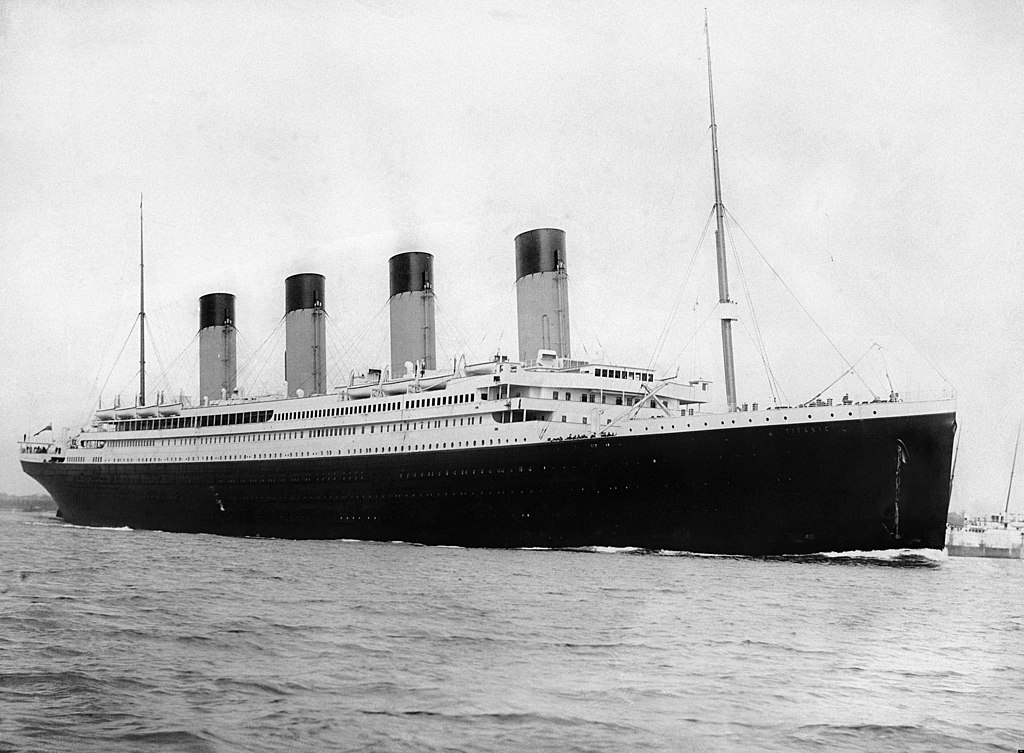History of the Titanic ~ The RMS Titanic, one of the most infamous maritime disasters in history, has captured the imagination of people worldwide since its tragic sinking on April 15, 1912. The Titanic’s story encompasses both the grandeur of human ambition and the stark realities of human fallibility, resulting in a saga that continues to fascinate and intrigue.
Construction and Design:
The Titanic was conceived as the epitome of luxury and engineering prowess, commissioned by the White Star Line and constructed by the Belfast-based shipbuilding company, Harland and Wolff. Designed by Thomas Andrews, the ship was a marvel of modern engineering, boasting state-of-the-art amenities and safety features.
Discover the Elite: The Top Ten Hollywood Movies of All Time
Departure and Maiden Voyage:
On April 10, 1912, the Titanic embarked on its maiden voyage from Southampton, England, bound for New York City. Aboard were approximately 2,200 passengers and crew, including some of the wealthiest individuals of the time, as well as immigrants seeking a new life in America.
Tragedy Strikes:
Four days into the voyage, on the night of April 14, 1912, tragedy struck when the Titanic collided with an iceberg in the North Atlantic Ocean. Despite warnings of ice in the area, the ship was traveling at near-maximum speed. The collision caused severe damage to the ship’s hull, leading to a rapid flooding of its compartments.
Sinking and Rescue Efforts:
As the situation rapidly deteriorated, the crew struggled to contain the flooding and deploy lifeboats. Due to insufficient lifeboats and inadequate emergency procedures, many passengers were left stranded or unable to escape. The Titanic ultimately sank in the early hours of April 15, 1912, with more than 1,500 lives lost.
Inquiry and Fallout:
In the aftermath of the disaster, inquiries were conducted on both sides of the Atlantic to investigate the circumstances surrounding the sinking. These inquiries revealed a series of missteps and oversights, including inadequate safety measures, flawed evacuation procedures, and complacency regarding the threat of ice.
Legacy and Cultural Impact:
The sinking of the Titanic had far-reaching consequences, sparking significant changes in maritime safety regulations and practices. It also left an indelible mark on popular culture, inspiring numerous books, films, and documentaries that continue to retell the story of the ill-fated voyage.
History of the Titanic
Discovery and Exploration:
For decades, the Titanic lay undisturbed at the bottom of the ocean, its exact location remaining a mystery. In 1985, a Franco-American expedition led by Robert Ballard discovered the wreckage of the Titanic nearly 12,000 feet below the surface. Subsequent expeditions have further explored and documented the site, shedding new light on the Titanic’s final moments.
What is the process of Presidential Elections in the United States of America? Step by Step
Memorials and Commemorations:
The sinking of the Titanic is commemorated annually on April 15th, with memorials held around the world to honor the lives lost in the tragedy. From memorial services to museum exhibitions, the Titanic’s legacy continues to be remembered and honored by people of all ages and backgrounds.
Conclusion:
The story of the Titanic serves as a poignant reminder of the fragility of human endeavors and the enduring spirit of resilience in the face of tragedy. It is a testament to the power of history to educate, inspire, and unite us in our shared humanity, ensuring that the memory of those lost aboard the Titanic will never be forgotten.
History of the Titanic
